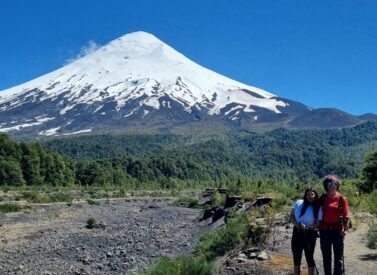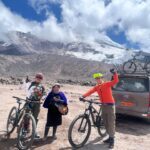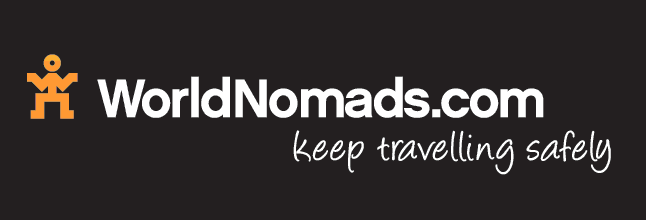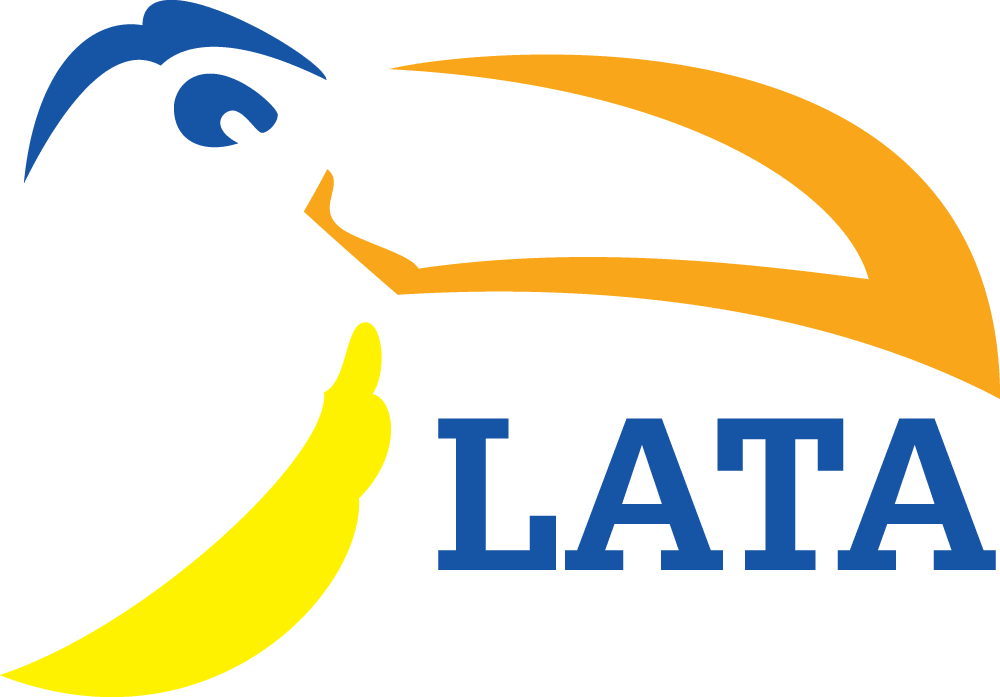
Downhill Mountain Biking in Ecuador
The best mountain biking tour among Ecuador’s mountains.
Is Ecuador good for cycling? It’s the best. Mountain biking in Ecuador offers one of South America’s most exhilarating downhill MTB adventure tours.
Take your own steed or use one of our full-suspension mountain bikes to swoop down volcanoes, passing indigenous villages and fertile farmland.
You’ll get up close to glacier-clad giants, stay in remote and historic Inca-era haciendas, and family-run guesthouses nestled in some of Ecuador’s most beautiful scenery.
This MTB tour suits cyclists looking for adventurous days in the saddle. Need it more hardcore or longer days? We can easily adapt the days to please the most ardent downhill mountain biking fans. Or check our alternative Ecuador mountain biking trip.
Where to Mountain Bike in Ecuador?
This Ecuador cycling tour starts with a choice of biking or walking around the historic, UNESCO Heritage site that is Quito. Alternatively, head to the ever-popular Chaquiñan Path ride, swigging delicious local tropical fruit juices in between short stretches on the bike.
We leave Quito and head for the clear and fresh air around the sacred Wingopana Mountain (4,000m/13,123ft), with its stunning views over to volcanoes Illinizas South and North (Sur y Nor). From here, we blast down quiet country lanes, some gravel, some dirt, with plenty of curves, fast sections, and jumps for those who know how.
Our next destination is the famous Quilotoa Crater. We will have plenty of time for stunning views before mountain biking through farmland to our next hotel, which is close to Cotopaxi National Park.
We’ll hop onto e-mountain bikes at the historic Hacienda El Porvenir and explore the working ranch’s beautiful forest, mountaintops, and dirt tracks.
Mountain Biking in Cotopaxi National Park
After a relaxing evening at El Porvenir, our MTB adventure leads us into Cotopaxi National Park. Deer, Andean foxes and even condors might be spotted as we head to the remote El Tambo lodge. This former Inca outpost is at the end of a trail that includes springs, wildlife, super-fast down hills, river crossings, and unrivalled Ecuadorian mountain scenery.
Our local hosts in El Tambo have their own stories to tell, often around the lodge’s generous fireplaces accompanied by local drinks. This is an unforgettable spot that very few ever visit. Suitably rested, we head back into Cotopaxi National Park to crisscross fast single tracks, all in the shadow of the ice-clad Cotopaxi volcano.
Mountain Biking Chimborazo, Ecuador
Fully acclimatised, it’s time to take on Ecuador’s best downhill mountain biking route down Chimborazo volcano, the country’s highest mountain.
Our transport drops us at the face of Chimborazo’s glaciers at 4,850m/15,912ft. Spirits full, we fly down the mountainside, swishing over moraine, sand, rivers, and rocks in an ever-changing terrain. There might even be snow!
Whatever we experience will be fast and furious on the bikes, with that double suspension coming in useful. Read all about downhill in Chimborazo in our blog.
Return to Quito or head to the warm and vibrant town of Baños for more mountain biking.
This is the best mountain bike tour among Ecuador’s volcanoes, countryside, and people.
Trip Highlights
Print Share Download as PDF-
Mountain bike down Chimborazo volcano
-
Cycle through Indigenous villages and glimpse Andean life
-
Stay at historic properties, from Inca outposts to Estancias
-
Explore remote corners of the iconic Cotopaxi National Park
-
Cycle around Quito’s historic streets
-
Fully flexible itinerary open to all cyclists
Fast rides, remote routes, an incredible guide, and a fantastic place to stay. I saw a new side of Ecuador, really felt its geography and enjoyed unmatched views throughout.
The full-suspension bike was easy to ride both up and downhill. Highlights included spotting an Andean fox hunting, deer running nearby, and staying in the remote El Tambo Inca building.
Tom Shearman, February 2025
Full Itinerary
Day 1 (Sat): Land Quito, transfer to hotel
Land at Quito airport and meet our rep, who will take you to our city centre hotel.
Relax on arrival and adjust to the altitude. For those using our full-suspension mountain bikes, bike fittings may take place today or early tomorrow morning.
Day 2: Quito city bike tour (B,L)
We offer several adventure options to suit your plans:
- A Quito city bike ride
- The Chaquiñan Path ride outside Quito
- A Quito city walking tour
1: Quito City Bike Tour
Your first ride in Ecuador starts on Amazonas Avenue, Quito’s business district. We cycle in bike lanes and make quick stops at El Ejido and La Alameda Parks.
We pedal onwards to La Basilica, a neo-gothic-style church. Leave the bikes and climb the church towers, which give an amazing view of the old town of Quito. The cycling route next takes us down Garcia Moreno Street. It’s known locally as the ‘seven crosses’ because there are Seven Churches on the street.
At La Independencia Plaza, we stop and listen to our guide tell us some local history about this important site. Next, we’ll ride around and admire Quito’s colonial architecture, which has made it a UNESCO World Heritage site. Our last stop is La Ronda, where we enjoy some ice cream before returning to our hotel.
2: Chaquiñan Path
We hop into the van for a 45-minute drive to the Valleys of Cumbaya and Tumbaco. The Chaquiñan Path is a very popular ride among local riders. After a safety briefing, we head off, passing fellow cyclists of all ages.
The Chaquiñan Path offers a great opportunity to immerse yourself in the local culture. Try delicious fresh juices and traditional snacks along the way. Our final destination is a local Empanada restaurant for lunch before returning to our hotel for a relaxing afternoon. (12miles/20km, height gain 613m/2,011ft).

3: Quito Walking Tour
This Quito walking tour takes you through the city’s oldest historical streets and popular plazas. Your guide will teach you about the city’s traditions and cultures, from local markets to tasting fresh fruits and other local products to a chocolate factory and the famous Basilica Church.
Return to your hotel for the evening.
Day 3: Wingopana Sacred Mountain, Isinlivi Valley (B,L,D)
We’ll leave Quito early on a scenic drive through the central Ecuadorian Andes. The Pan-American highway leads us south, this iconic route winding past volcanoes and lush valleys.
Our destination is the sacred Cerro Wingopana.
Wingopana Mountain Highlights
- Climb Cerro Wingopana (30 mins) for amazing 360 views, including Illinizas North and South
- Swooping downhills on gravel roads with little traffic
- Pass through Andean life and fields full of corn, potatoes, citric fruits, passionfruit (taxo), and avocado.
- See terraces and flowers, including Ecuador’s national flower, the Chuqueragua
- Spot ‘la chakra’ – maise, frejol (beans), and pumpkin, three plants designed to feed a family.
- Paramo at over 3,700m/12,140ft
- Look out for American kestrels and other birds.
We’ll have lunch at a local family’s home and then spend the afternoon wine tasting at a vineyard owned by 24 Indigenous families. Don’t worry—our support vehicle will take us back to our hotel in the Isinlivi Valley.

- Distance: 18 miles/27.5km
- Elevation gain: 1,072m/3,517ft
- Elevation loss: 2,187m/7,175ft
- Overnight: Llullullama
- Meals included: Breakfast, lunch and dinner
Possible Mindo extension before Wingopana
We can add in a two-day biking extension to Mindo before heading to Wingopana, an area full of wildlife, birds, verdant forests, and warm valleys.
Day 1: Ride around Tandapaya through lush cloud forest, dirt and gravel tracks, then stay at El Monte Sustainable co-lodge. (23 miles/37km, elevation loss: 1,739m/5,707ft)
Day 2: Descend into Pululahua volcano (19 miles/30km, elevation loss: 1,141m/3,745ft).
Day 4: Quilotoa Crater Lake (B,L)
The highlights come thick and fast now. Today, Quilotoa Crater is part of the famous Quilotoa Loop.
This volcanic crater’s turquoise waters and beautiful backdrop make for perfect pictures. We can walk down into the crater (2-3 hours in total) to get close to the water and then return to Quilotoa for lunch.
In the afternoon, we hop on the bikes for a scenic ride past Andean farms next to Quilotoa. At points, we’ll reach 4,000m/13,123ft—a vital part of getting used to high altitude for the challenges ahead.
Note: We can extend the ride today by not walking into the crater and adding part of the Quilotoa crater loop.

- Distance: 8 miles/13km
- Elevation gain: 195m/640ft
- Elevation loss: 563m/1,847ft
- Overnight: La Cienega Hacienda
- Meals included: Breakfast and lunch
Day 5: E-bikes at Hacienda El Porvenir (B,L,D)
Our transport vehicle takes us to Hacienda El Porvenir (3,600m/11,811ft), a historic hacienda nestled at the foothills of the majestic Rumiñahui volcano. Named after an Inca soldier who fought the Spanish conquistadores, El Porvenir is the perfect place to finalise our acclimatisation.
Today, we’ll ride the Hacienda’s e-bikes into the mountains behind the lodging. Don’t be fooled that this is an easy day; the rugged terrain tests your skills between looks at the stunning scenery.
We reach 4,080m/13,386ft after 710m/2,330ft of climbing with e-bikes. The full circuit here is 12 miles/19km, a taxing 3-4 hours for the full thing.
El Porvenir Highlights
- Giant e-bikes with four modes help all levels of cyclists enjoy a day ride.
- Pass through beautiful riparian polylepis copse
- Switchbacks around paramo and ‘almohadilla’ plants (little pillows)
- Stunning views of Cotopaxi Rumiñahui volcanoes.
- Choose a suitable route: blue for beginners or orange for intermediate or higher.
Extra information about trails
Blue Trail – beginners
The blue trail leads straight out of the Hacienda, past grazing horses, and into a beautiful riparian polylepis copse planted by the property owners at the turn of the millennium.
The surreal and ethereal landscape is home to some small natural jumps for those who wish. There is even a tentadero bull ring, where bulls are brought for training and inspections.
The blue trail returns to the Hacienda via some curvy switchbacks with bumps to keep you right, making it suitable for most cyclists.
Orange trail – intermediate/higher
The orange route continues higher, with climbing switchbacks through paramo and almohadilla tufty plants. Look out for caracara birds that fly close overhead.
Cyclists have a decision to make upon reaching an alder forest.
- Return to the Hacienda and go down some fast trails and roads.
- Continue climbing through the boggy forest.
Intermediate cyclists may have to push on some sections. Advanced-level MTBers will appreciate the challenge.
With Rumiñahui in sight, climb to the viewpoint, which, on a clear day, offers a magnificent 360-degree view of Cotopaxi and the surrounding lands.
The descent
The descent (5km) is steep and fast over grassy knolls. Look right to see Hacienda’s Guardians Sculpture featuring a llama, a man, and a woman, built in 2015 to protect the lands from Cotopaxi’s eruption.
The path eventually heads into El Porvenir’s corral area, where livestock are herded by the Hacienda’s chagras to receive check-ups, jabs, etc.
Note: People wanting to cycle longer distances can take gravel roads to local communities.
In the afternoon, we gather around the cosy fireplace for a delightful dinner to end the day on a high note.
- Distance: 12 miles/19km
- Elevation gain: 710m/2,330ft
- Elevation loss: 710m/2,330ft
- Overnight: Hacienda el Porvenir
- Meals included: Breakfast, lunch and dinner
Day 6: Ride Cotopaxi National Park to El Tambo (B,L,D)
We’re now fully acclimatised and ready to take on the challenge of Cotopaxi National Park. Today, we’re heading to remote areas where we’ll scarcely see a soul, but we hope to spot Andean wildlife at every corner.
Drive (or you can cycle 20km) into Cotopaxi National Park. This park is home to the iconic—and active—Cotopaxi volcano, which boasts a perfectly conical and snow-capped peak. It offers a stunning backdrop over the next two days.
We cycle exclusive double and single tracks that wind through a breathtaking canyon featuring spectacular views at every turn. There are charming bridges to cross and, if the weather is clear, we’ll be treated to magnificent vistas of Cotopaxi itself.
Cotopaxi Highlights
- Ride to the north and eastern slopes of Cotopaxi, with dramatic views en route
- A mix of dirt tracks, single tracks, technical turns, bridges, and fast downhills.
- Look for Andean foxes, white-tailed deer, spectacled bears, pumas, condors, and eagles.
- Stay at a former Inca outpost, El Tambo, now a working and remote hacienda.
There are two options: ride all the way from Hacienda El Porvenir to El Tambo (hard, 40km), or take a lift to the National Park and cycle to El Tambo (intermediate, 22km).
Option 1: Cycle El Porvenir to El Tambo
Cycle out of El Porvenir and take a 4km undulating path with Cotopaxi views to the Cotopaxi National Park’s northern entrance. You can buy souvenirs here.
Then, we cycle along a dirt track around the northern flanks of Cotopaxi towards its eastern face. It’s a slow, gentle uphill, with some sections with loose rocks and sand. Guides can find old gaucho trails to follow.
Experts can always find rocks to jump off or over and skids. It’s an MTBers’ playground. This extra section is for those who want a long day.
- Distance: 25 miles/40km (5-6 hours)
- Elevation gain: 600m/1,970ft
- Elevation loss: 1,000m/3,300ft
Option 2: Drive to El Tambo entrance, cycle in
This shorter route means driving the same road as the cyclists to the El Tambo Foundation reserve gates. This is private land. Hop on your bike for a quick 1km down loose rock, some single track, and a couple of river crossings. Then, turn right towards the water collection areas: Quito gets a third of its water from Cotopaxi and two-thirds from Antisana.
It’s a short climb to a manantial (underground spring) next to an eagle nesting site and also the basic Chiri Machi refuge, where, with permission, people camp. Get the legs ready for the next part: it’s a long climb over amhuadillos, bogs, tricky bridges, and up to a pass, around a 2-mile/3.5km ride up.
From the pass, hopefully, there will be great views of Antisana. From here, we descend (10km) down the Valley Yanachisa towards El Tambo. There are single tracks, tight curves, and bridges with immediate steep ascents to get the heart pumping. We then cross the River Tambo for the final descent to El Tambo.
There are a fair few bogs en route, so you might get wet feet!

El Tambo Hacienda
El Tambo Hacienda is a charming working hacienda built atop ancient Inca ruins. Here, we’ll unwind and enjoy a delightful homemade dinner, soaking in our surroundings’ rich history and beauty. Check our Instagram reel for more.
- Distance: 14 miles/22km (3-4 hours)
- Elevation gain: 200m/657ft
- Elevation loss: 1,000m/3,300ft
- Overnight: El Tambo
- Meals included: Breakfast, lunch and dinner
Day 7: Ride Around Cotopaxi National Park (B,L,D)
We wake early to the sounds of the working estancia and hope to have views of both Cotopaxi and Antisana volcanoes from our privileged accommodation.
After a hearty breakfast, we hop onto the bike and ride alongside the picturesque Tambo Yacu River, returning to Cotopaxi National Park. The first few hours of today involve climbing past rock faces and winding river views and keeping our eyes out for deer, foxes, rabbits, and condors.
It’s a 20-km ride up a bumpy path with 600m/1,970ft of climbing. There are some exciting large-pipe bridges, loose gravel sections, and single tracks to explore. Some pulls are short but steep, especially as we approach the gates that mark El Tambo’s boundary.
Note: The group can also take the vehicle to the start of the downhills and avoid the climb.
Mountain Biking around Cotopaxi: The Highlights
- MTB Chagra (cowboy) and animal single track with constant views of Cotopaxi.
- A mix of dirt tracks, single tracks, and fast downhills – almost always without traffic.
- Look for Andean foxes, white-tailed deer, spectacled bears, pumas, condors, and eagles.
- Visit the Inca ruins of Pucará del Salitre and the beautifully sheltered manantial underground springs.
After a morning of climbing, we’ll be rewarded with exhilarating downhill sections that will surely get your adrenaline pumping.
The downhill section starts at around 4,100m/13,451ft. Your guide leads you over moraine ‘rock gardens’ to Laguna Santo Domingo. On clear days, Cotopaxi reflects in its waters. Next, an exhilarating downhill to the peace and quiet of manantials, underwater springs that come to the surface surrounded by four green volcanic tumps. It’s warmer, quieter, and sheltered here, a beautiful, relaxing spot.
Inca Ruins
After our rejuvenating stop, we’ll continue riding to the Inca ‘Tambo’ outpost of Pucará. This historic site served as a resting point for Inca messengers about 600 years ago and was crucial for the Inca empire’s control of the region. A bumpy descent over grassy tufts leads to another section where you explore gaucho trails. Sincholagua volcano, meaning ‘belt of fire’, frames the section.
Mountain biking experts can always find rocks to jump off or over, skids, etc. The final part is on the main road (3km) to the national park. Then, we retrace our steps to El Porvenir, where we load up the van and head to Chimborazo National Park.
Our lodging is the warm and welcoming Chimborazo Lodge, nestled at the feet of Ecuador’s majestic highest peak.

- Distance: 14 miles/23km
- Elevation gain: 600m/1,970ft (if cycling out of El Tambo to the downhill section’s start)
- Elevation loss: 800m/2,560ft
- Overnight: Chimborazo Lodge
- Meals included: Breakfast and lunch
Day 8: Chimborazo Downhill MTB day, return to Quito (B,L)
Today is our highest, fastest, and most exhilarating day. Chimborazo (6,263m/20,548ft) is Ecuador’s highest mountain, and we’ll get a lift to 4,800m/15,750ft to our start point. Check our Instagram reel.
Chimborazo Highlights
- Start at the face of Chimborazo, Ecuador’s highest mountain and the furthest point from the Earth’s centre.
- Breathtaking views give way to a scintillating first downhill to the entrance, dropping 500m/1,640ft over 4km.
- Look for rare vicuñas on the mountain
- A mix of semi-technical with fast riding over four fantastic hours
The mountain’s ever-changing topography lends to various sections.
- A fast, technical, gravel ride on Chimborazo’s moraine.
- Next, a tricky sandy section (use the road if unsure).
- A fast 2km downhill on tarmac.
- A 30-minute climb that gives to an ancient Puruhá trail, a pre-Inca civilisation.
- Swoop into fertile farming land with sheep, alpacas, cows, and crops, including quinoa.
While descending, keep an eye out for the Chimborazo Hillstar hummingbird, which eats Ecuador’s national flower, Chuqueragua, also found on the mountain.
Enjoy local cuisine
After our ride, we enjoy a meal at a local restaurant, sampling traditional Ecuadorian cuisine, including guinea pig for those who wish. We head back to Quito that afternoon with a huge sense of achievement and wonder at the tracks we’ve ridden, views seen, and varied experiences on Ecuador’s best mountain bike trip.

- Distance: 15 miles/5km
- Elevation gain: 294m/964ft
- Elevation loss: 1,692m/5,551ft
- Overnight: Casona 1914
- Meals included: Breakfast and lunch
Optional extension to Baños
Want more MTB riding? Baños offers several day rides to keep the pedals turning.
We can take you to Baños after Chimborazo, where you spend the night. Then choose to add these day tours – check our Instagram reel:
Llanganates forest: Fast downhill from cloud forest to warm Amazon gateway, followed by a visit to the famous Pailón del Diablo waterfall. (18 miles/31km, elevation loss: 2,733m/8,966ft).
Pastaza Province: An undulating day with rides interspersed with visits to fish farms, waterfalls, lunch at a local family’s house, lookouts, and an Indigenous community visit.
Baños is a lively town with a mix of nightlife and relaxing areas. The municipal hot springs are lovely, as are the eateries and bars.
Or spend a day doing technical mountain biking at Santa Rita. Check our Instagram reel of a green route.
Day 9: Transfer out, ends (B)
Transfer to the airport, ends.
Prices From $2,640 / £2,146 per person
What's Included?
Private transport, English-speaking guide (ratio: 1:4), accommodation in 3* hotels with private bathrooms (apart from El Tambo), full suspension mountain bike with helmet, gloves, and knee pads, transfers and meals as listed, entry fees to museums and reserves, water and snacks en route.
What's Not Included?
International flights, meals not listed, alcoholic or soft drinks, tips, travel insurance, personal items, Mindo or Baños extensions.
Accommodation
We have selected 3*-standard hotels with private bathrooms throughout the tour for their charm and appeal. Those mentioned are subject to availability. All have Wi-Fi, except for El Tambo.
Quito, Casona 1914
A historic mansion converted into a hotel with gardens, SPA, terrace, and plenty of bike storage space.
Isinlivi Valley, Llulu Llama
A family-run mountain lodge with beautiful views, gardens, and peace.
Quilotoa, La Cienega Hacienda
One of Ecuador’s most famous and historic haciendas.
Hacienda El Porvenir
Idyllic Hacienda with excellent services, a home-from-home in the mountains.
El Tambo
Former Inca outpost turned family-run mountain lodge with unmatchable views, warming fireplaces, and hearty food. Note that there are shared bathrooms (with hot water showers). Rooms are all on the upper floor in twin, triple, quadruple, and six-bed configurations. Thin reed walls separate each room: expect basic conditions. Electricity is sporadic, and there is no Wi-Fi.
Chimborazo Lodge
Comfortable mountain lodge at the foot of Chimborazo with fantastic views and sometimes llamas and vicuñas as visitors.
Tour Staff
English-speaking mountain bike guides are among the top MTB riders in Ecuador. They know the best routes and conditions to ensure your trip runs smoothly. They’ll assess riding abilities as the trip progresses and are happy to share tips to improve styles.
Our backup team of drivers and cooks will ensure your comfort throughout the tour. Guides and the backup team carry equipment for any emergency roadside bike repairs.
Meals
Hotels serve a mix of continental-style and local breakfasts: pastries, teas, coffees, jams, etc., and perhaps some local corns with scrambled eggs or quinoa. Ecuador is blessed with wonderful fruit and vegetables, making for varied and tasty meals and juices, especially enjoyable for vegans and vegetarians.
Restaurant lunches feature local dishes, from guinea pigs to quinoa soups, chicken, trout, or potato dishes. Boxed lunches might include sandwiches, crackers, cheese, meat, and juices.
Evening meals at hotels tend to consist of a soup to start, a main meal, and pudding. Most serve international dishes like pasta and hamburgers alongside local dishes, from llama to steak, or vegetarian options with quinoa or corn, salads, and more.
Activity Level
This tour suits any cyclist looking for an adventure. Those who have never done downhill mountain biking will learn new skills during an exhilarating ride. You’ll spend 2-4 hours in the saddle each day.
Experienced MTBers will love the variety of terrain and challenge of riding at altitude. The descents are long. Note that this is not a technical, single-track type biking experience. Expect to spend 4-5 hours daily in the saddle, perhaps longer, if your group takes the longer riding options each day.
Practical Information
Introduction to Ecuador
Ecuador is the second smallest South American country, and one of the most varied.
It comprises three main geographical areas: the coast, highlands and Amazon plus is home to the Galapagos Islands.
Because of its relatively compact size, it makes a great holiday destination as you can move from highlight to highlight fairly easily and rapidly.
Geography of Ecuador
Landscapes vary from the drier south to the more humid north.
The Highlands, or sierra, encompass two Andean Cordilleras (the Central and Western), which run north to south through the country. Ecuador’s largest volcano is Chimborazo (6,310m) whose summit, because of its proximity to the equator, is the closest point on earth to the sun. Several of Ecuador’s volcanoes are still active, and it’s a great area for trekking.
Descending the steep, east-facing slopes of the eastern Cordillera, one passes through a transition zone comprising dense cloud forest and humid high jungle, before entering the Amazon lowlands.
This mainly primary rainforest covers a third of the country, accounts for 5% of the population and stretches across Ecuador, from its Colombian to its Peruvian borders.
The Galapagos Islands are simply unique. Lying 600 miles off the mainland, the archipelago comprises the summits of gigantic equatorial volcanoes.
The flora and fauna of the Galapagos, long separated from their continental cousins, have evolved differently. Charles Darwin used his observations there to develop his theory of Evolution.
Ecuador mainland climate
Ecuador lies between latitudes 4º south and 2º north. Overall, climate varies according to time of year, altitude and region.
In the Ecuadorian highlands, there is little temperature variation by season; this depends largely on altitude.
In Quito, shade temperatures range from 6 to 10ºC in the morning and from 19 to 23ºC in the afternoon, with cool nights. In the lower intermontane basins, it gets significantly warmer.
Rainfall depends on whether an area lies closer to the eastern or western Andes. To the west, June to Sept is the dry period and Oct to May the wet (with often a short, dry spell in Dec or Jan).
The best period to visit Quito and trek and climb volcanoes such as Cotopaxi is the west Andean dry season of June to Sept and Dec/Jan. This is also Ecuador’s high season. During the Oct to May wet season, most rainfall is in the afternoons.
To the east, Oct to Feb are dry and March to Sept are wet. Overall, the southern highlands are drier than the northern highlands.
Kit list
Good kit is vital for every trip.
Book with Andean Trails and get 15% off Páramo’s fantastic ethical and high-performance outdoor gear.
Overview
We provide everything, including a full-suspension bike, helmet, and knee pads, but not gloves, sunglasses, and other personal kit. You can ride with or without SPD clips.
If you are taking your own bike, it should be a mountain bike, a quality double-suspension, or a cross-country bike.
Please contact us if you are unsure whether your bike will be suitable.
Hopefully, during the day, it will be generally sunny enough for shorts and T-shirts, though having a fleece and rain gear handy is advisable. It can and will get cold, especially in the evenings, so bring a warm fleece jacket, a good waterproof and some warm clothes, including thermal underwear, gloves, a scarf, a woolly hat, and one set of smarter clothes for cities.
Below is a more detailed guide.
Detailed kit list – clothing
- Cycle gloves
- Medium-weight parka or a down jacket.
- Waterproof jacket and trousers. The jacket needs to be waterproof and roomy. Side-zip pants are recommended.
- 2-3 long-sleeve shirts – no cotton
- 2-3 short-sleeve cycle shirts – no cotton
- 2 pair of hiking trousers- cotton or synthetic material (no jeans)
- 1 fleece or sweat trousers (for cold evenings)
- 2-3 pairs of shorts.
- 2-3 pairs of padded cycling shorts.
- Long thermals – synthetic or wool – light to medium weight top & bottoms.
- 2-3 mid-weight (wool or synthetic) socks.
- 2-3 liner socks if needed
- Athletic-type socks, several pairs, city use
- Running/tennis shoes or sandals are very comfortable when you are off the bike.
- 1 lightweight wool sweater or windproof fleece
- 1 wool or synthetic warm hat for evenings.
- Cycling hat.
- Sunglasses with UV filter.
- Bandanna – to protect the neck from the intense sun.
Biking
- Bike bag/box (if bringing own bike).
- Large holdall/rucksack (60-80 litres) for main luggage.
- Small daypack
- Water bottles / camel-bak.
- SPDs pedals / shoes / toe clips.
- Basic repair kit: We provide a general toolkit on all trips, but please bring any specialist spare parts for your bike with you, such as spokes, etc.
Personal
- A personal first-aid kit should include painkillers, plasters (band-aids), moleskin, antibiotic cream, anti-diarrhoea tablets, throat lozenges, rehydration salts, and personal medication.
- Insect repellent and after-bite
- Towel & wash-kit.
- Wet Wipes/antiseptic hand-wash cream.
- Sunscreen (factor 30+) and lip salve.
- Headlamp (plus spare bulb and batteries).
- Plastic bags – ‘Zip-loc’ & tough bin liners.
- Camera and film/memory cards (take at least twice the amount you think you will need!).
- Book, Kindle or other to help pass the time.
- Spanish/English phrasebook.
- Extra snacks, i.e. cereal bars or favourite chocolate bars.
Miscellaneous others
- Money belt
- US dollars cash, mixed-denomination notes, undamaged and unmarked.
- ATM cash/credit card.
- Any inoculation certificates.
- Personal & medical insurance certificates.
- Portable Carbon Monoxide Detector
- Comfortable clothes for travel, smart clothes for nightlife optional.
ATOL holiday protection
Andean Trails has 25 years of experience of putting together the best South America holidays.
We pay a fee to the CAA for every licensable passenger we book since we hold an Air Travel Organiser’s Licence granted by the Civil Aviation Authority. In the unlikely event of our insolvency, the CAA will ensure that you are not stranded abroad and will arrange to refund any money you have paid to us for an advance booking.
We also offer ATOL (Civil Aviation Authority) protected holidays to give our customers peace of mind when booking and travelling.
When you buy an ATOL protected air holiday package from Andean Trails Ltd you will receive a Confirmation Invoice from us confirming your arrangements and your protection under our Air Travel Organiser’s Licence number 6275.
You can read more about ATOL, who is covered and what protections you have if not ATOL-covered, on our ATOL page.
What is ATOL?
The CAA’s ATOL scheme offers protection to your money and your holiday if you book with us. Not everybody is covered (see ‘Who is covered?’ for more), as you must purchase an ‘air package holiday’ with Andean Trails to be protected.
And ‘air package holiday’ is defined as including a flight and some ground services (hotel, transfer, trek etc). This is also known as an ‘ATOL-protected holiday’.
Who is covered?
To be covered by ATOL, you must book a flight and some ground services with us and be from the UK. If you are from the UK and only book ground services and no flights, you are not covered by ATOL (see below for more on how non-ATOL clients are covered).
If you are outside the UK and buy flights with us, you will be ATOL protected IF any of the flights booked with Andean Trails touches/stops in the UK at any point during your holiday package booked with us.
If you buy your flights elsewhere, please check with that agent if you are ATOL protected. Be careful with online flight purchases and make sure you know what protection you have, if any, before paying for flights.
Not all holiday or travel services offered and sold by us will be protected by the ATOL scheme. Please ask us to confirm what protection may apply to your booking.
For land only holidays not involving any air travel, in accordance with “The Package Travel, Package Holidays and Package Tours Regulations 1992”, all UK passengers booking with Andean Trails Ltd. are fully protected for the initial deposit and subsequently the balance of all money paid to us, arising from cancellation or curtailment of travel arrangements due to the insolvency of Andean Trails.
I’m not ATOL covered, what protection do I have?
If you are not ATOL covered, any payments you make to us go to a Trust account.
We can only access this money once your tour has been completed, meaning that if anything happens to Andean Trails Limited while you are on holiday, then your money is secure and you can either complete the trip or be able to make it home.
If you pay for your holiday with a credit card, some offer payment protection – please check with your cardholder.
You also should have cancellation protection written into your insurance (which we recommend you have at the time of booking) in case you need to cancel.
Climate, Ecuador mainland
Ecuador lies between latitudes 4º south and 2º north. Overall, climate varies according to time of year, altitude and region.
In the Ecuadorian highlands, there is little temperature variation by season; this depends largely on altitude.
In Quito, shade temperatures range from 6 to 10ºC in the morning and from 19 to 23ºC in the afternoon, with cool nights. In the lower intermontane basins, it gets significantly warmer.
Rainfall depends on whether an area lies closer to the eastern or western Andes. To the west, June to Sept is the dry period and Oct to May the wet (with often a short, dry spell in Dec or Jan).
The best period to visit Quito and trek and climb volcanoes such as Cotopaxi is the west Andean dry season of June to Sept and Dec/Jan. This is also Ecuador’s high season. During the Oct to May wet season, most rainfall is in the afternoons.
To the east, Oct to Feb are dry and March to Sept are wet. Overall, the southern highlands are drier than the northern highlands.
Communication, Ecuador
Dialling codes
The international code for Ecuador is +593.
Regions have dialling codes, with a 0 prefix.
Landlines
Ecuador’s landlines have 7 digits, and to call landline-landline in the same city, simply dial the 7 digits.
If calling landline to another regional landline/city, start with a 0 then the regional code.
If using your own mobile phone to call a landline, dial the country code, the regional/city code without the 0, and then the number, e.g. for Quito (code: 02), dial +593 2 1234567.
Mobiles
Mobiles have 8 digits, and start with 09 to make a total of 10 digits;
If you are dialling Ecuador mobile to mobile, simply dial the full number, including the 09.
If using your own mobile phone to call an Ecuadorian mobile, dial the country code, then omit the 0 of 09, then the 8 remaining digits e.g. +593 9 1234-5678.
Almost all unlocked phones will work in Ecuador with a local SIM, however – check with your provider before arrival if your phone will work.
Roaming charges may be high – again, best to check.
Internet
Most hotels, cafes, restaurants and airports offer free and generally good Wi-Fi. There are some locoturios – internet cafes – offering cheap and good internet in most towns and cities.
Post
Head to the official postal service, Correos del Ecuador.
Communication, Galapagos + Ecuador
Dialling codes
The international code for Ecuador is +593.
Regions have dialling codes, with a 0 prefix – Galapagos is 05.
Internet
Galapagos is a very remote destination and your mobile phone will most likely be out of range.
People on cruises will almost certainly be out of contact for most of the time aboard. Some boats are starting to offer Wi-Fi at expensive rates.
People in hotels will be able to access phones and very slow internet.
Landlines
Ecuador’s landlines have 7 digits, and to call landline-landline in the same city, simply dial the 7 digits.
If calling landline to another regional landline/city, start with a 0 then the regional code.
If using your own mobile phone to call a landline, dial the country code, the regional/city code without the 0, and then the number, e.g. for Galapagos (code: 05), dial +593 5 1234567.
Mobiles
Mobiles have 8 digits, and start with 09 to make a total of 10 digits;
If you are dialling Ecuador mobile to mobile, simply dial the full number, including the 09.
If using your own mobile phone to call an Ecuadorian mobile, dial the country code, then omit the 0 of 09, then the 8 remaining digits e.g. +593 9 1234-5678.
Almost all unlocked phones will work in Ecuador with a local SIM, however – check with your provider before arrival if your phone will work.
Roaming charges may be high – again, best to check.
Post
To send postcards, you can leave them at Post Office Bay for fellow travellers to pick up and send on.
Otherwise, head to the official postal service, Correos del Ecuador, on Santa Cruz or San Cristobal.
Downhill Mountain Biking MTB Kit List
Good kit is vital for every trip.
Book with Andean Trails and get 15% off Páramo’s fantastic ethical and high-performance outdoor gear.
Overview
We provide everything, including a full-suspension bike, helmet, and knee pads, but not gloves, sunglasses, and other personal kit. You can ride with or without SPD clips.
If you are taking your own bike, it should be a mountain bike, a quality double-suspension, or a cross-country bike.
Please contact us if you are unsure whether your bike will be suitable.
Hopefully, during the day, it will be generally sunny enough for shorts and T-shirts, though having a fleece and rain gear handy is advisable. It can and will get cold, especially in the evenings, so bring a warm fleece jacket, a good waterproof and some warm clothes, including thermal underwear, gloves, a scarf, a woolly hat, and one set of smarter clothes for cities.
Below is a more detailed guide.
Detailed kit list – clothing
- Cycle gloves
- Medium-weight parka or a down jacket.
- Waterproof jacket and trousers. The jacket needs to be waterproof and roomy. Side-zip pants are recommended.
- 2-3 long-sleeve shirts – no cotton
- 2-3 short-sleeve cycle shirts – no cotton
- 2 pair of hiking trousers- cotton or synthetic material (no jeans)
- 1 fleece or sweat trousers (for cold evenings)
- 2-3 pairs of shorts.
- 2-3 pairs of padded cycling shorts.
- Long thermals – synthetic or wool – light to medium weight top & bottoms.
- 2-3 mid-weight (wool or synthetic) socks.
- 2-3 liner socks if needed
- Athletic-type socks, several pairs, city use
- Running/tennis shoes or sandals are very comfortable when you are off the bike.
- 1 lightweight wool sweater or windproof fleece
- 1 wool or synthetic warm hat for evenings.
- Cycling hat.
- Sunglasses with UV filter.
- Bandanna – to protect the neck from the intense sun.
Biking
- Bike bag/box (if bringing own bike).
- Large holdall/rucksack (60-80 litres) for main luggage.
- Small daypack
- Water bottles / camel-bak.
- SPDs pedals / shoes / toe clips.
- Basic repair kit: We provide a general toolkit on all trips, but please bring any specialist spare parts for your bike with you, such as spokes, etc.
Personal
- A personal first-aid kit should include painkillers, plasters (band-aids), moleskin, antibiotic cream, anti-diarrhoea tablets, throat lozenges, rehydration salts, and personal medication.
- Insect repellent and after-bite
- Towel & wash-kit.
- Wet Wipes/antiseptic hand-wash cream.
- Sunscreen (factor 30+) and lip salve.
- Headlamp (plus spare bulb and batteries).
- Plastic bags – ‘Zip-loc’ & tough bin liners.
- Camera and film/memory cards (take at least twice the amount you think you will need!).
- Book, Kindle or other to help pass the time.
- Spanish/English phrasebook.
- Extra snacks, i.e. cereal bars or favourite chocolate bars.
Miscellaneous others
- Money belt
- US dollars cash, mixed-denomination notes, undamaged and unmarked.
- ATM cash/credit card.
- Any inoculation certificates.
- Personal & medical insurance certificates.
- Portable Carbon Monoxide Detector
- Comfortable clothes for travel, smart clothes for nightlife optional.
Ecuador’s Cloud Forest
Ecuador’s cloud forest covers its rolling hillsides as they descend from the high Andean plateaus into the rain forest or down to the Pacific coast.
Most of this tropical forest lies between 1,200-2,700m/3,937-8,858ft above sea level, an evergreen, lush and moist forest, teeming with bird and insect life.
Much of the cloud forest is readily accessible from Quito making it perfect a 2 or 3-day stay.
There are many lodges with virgin forest, home to a dazzling variety of hummingbirds, refreshing waterfalls for swimming, zip lining and wildlife walks.
The humming birds, Cock of the Rock and the chance of spotting larger mammals such as the spectacled bears are just some of the attractions of spending some time in this amazing ecosystem.
Cotopaxi, Ecuador
Cotopaxi National Park is dominated by the almost perfect cone shape of Cotopaxi (5,897m/19,347ft), an active volcano and the second highest mountain in Ecuador after Chimborazo.
The national park is well worth a visit for trekking in the foothills, climbing smaller peaks like Ruminahui, downhill mountain biking, horse riding or just enjoying the National Park itself.
The surrounding páramo is good for bird watching – you may see condors soaring above.
There are lots of lovely hacienda and mountain refugios to stay at in and around the park, and from which there are a variety of walks, horse rides and bike rides for all levels.
Quito, Ecuador
Ecuador’s vibrant capital Quito sits in a stunning location, surrounded by snow capped volcanoes and many of the high peaks of the Andean sierra.
There is plenty to do for visitors of all ages and interests. The old town of Quito is a UNESCO world heritage site, with many beautiful churches and colonial facades, a wonderful range of museums and picturesque squares.
For an over view of the city and along the Avenue of volcanoes to north and south and to help with acclimatising try taking the Teleferico (cable car) up the eastern slope of Pichincha volcano.
At night Quito is a lively city. Head to the modern Mariscal area where tourists and locals alike find a great range of restaurants, bars and night clubs.
Prices From $2,640 / £2,146 per person
2025-26 price, based on 4+ people, twin/double room basis.
2-3 people: $3,430pp
4+ people: $2,640pp
8+ people: $2,460pp
Single supplement $860pp
Guide to client ratio: 1:4
Add Mindo and Baños cycling extensions at extra cost.
Dates & Prices
Prices From $2,640 / £2,146 per person
2025-26 price, based on 4+ people, twin/double room basis.
2-3 people: $3,430pp
4+ people: $2,640pp
8+ people: $2,460pp
Single supplement $860pp
Guide to client ratio: 1:4
Add Mindo and Baños cycling extensions at extra cost.
Can’t find what you’re looking for? Get in Touch
+44 (0)131 378 5593
+44 (0)131 554 6025



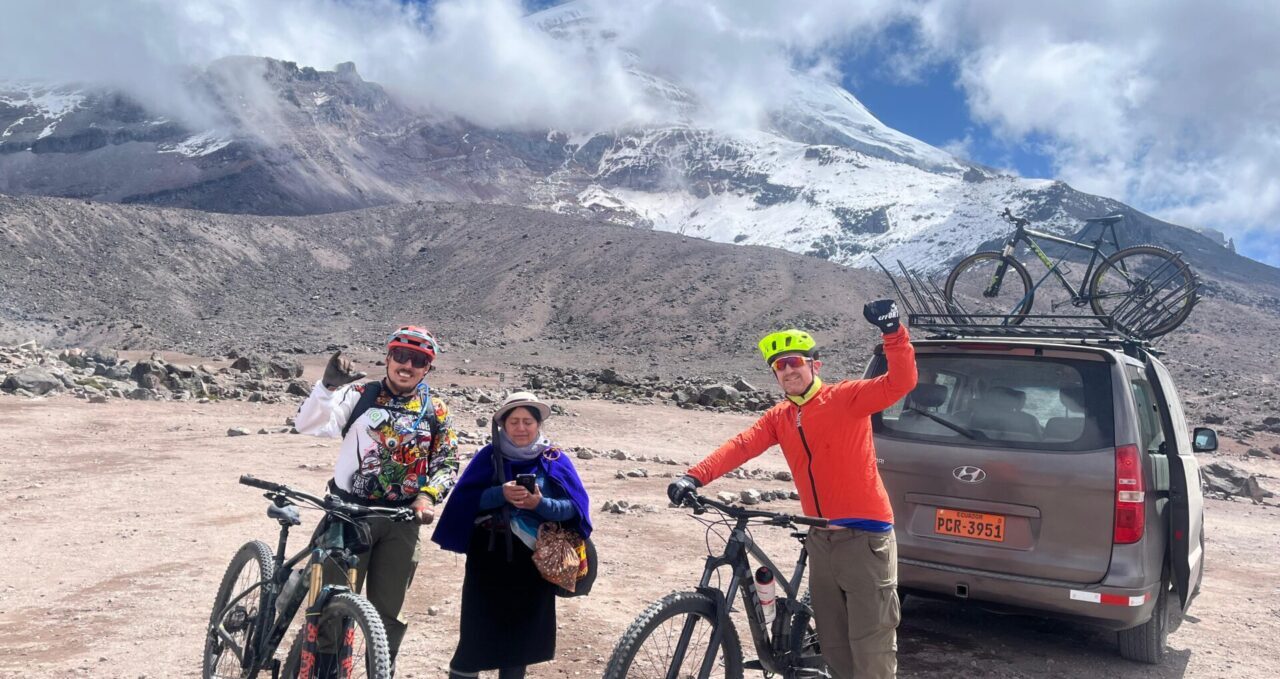
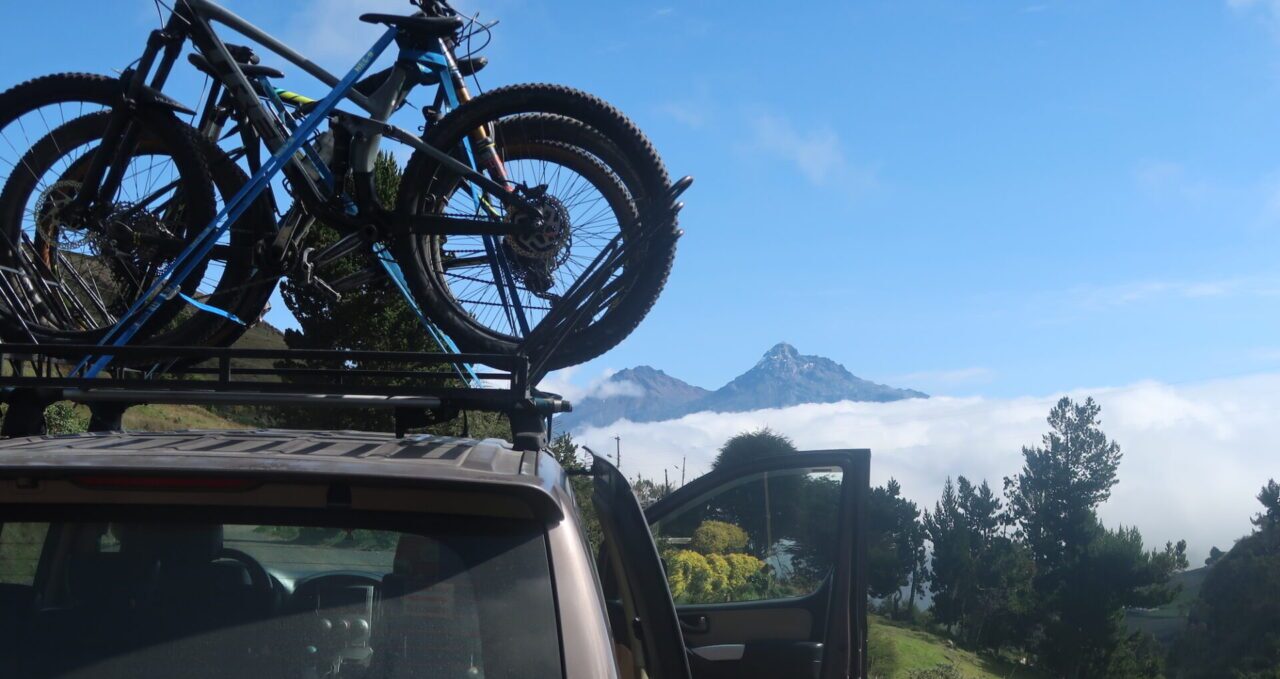
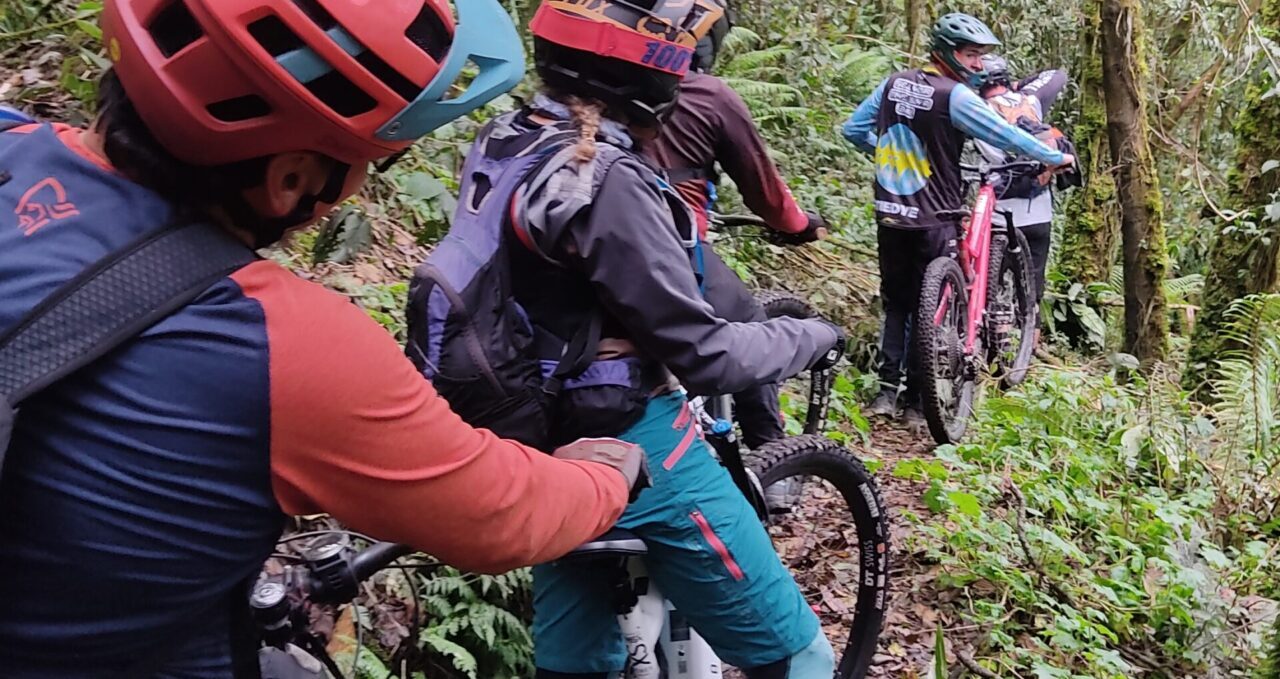

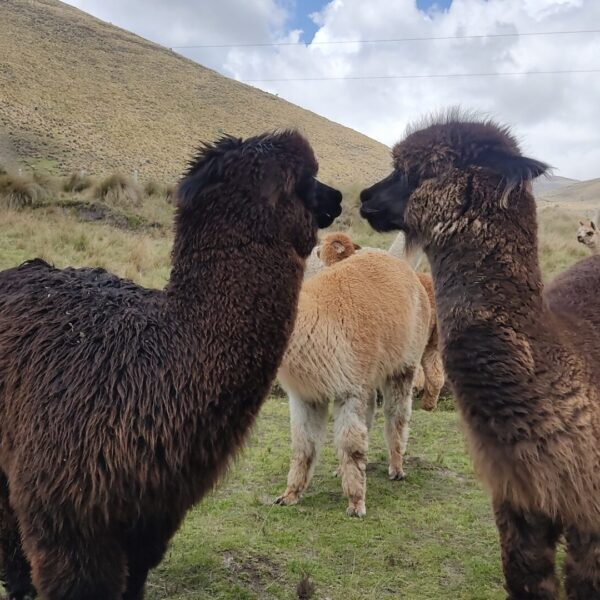
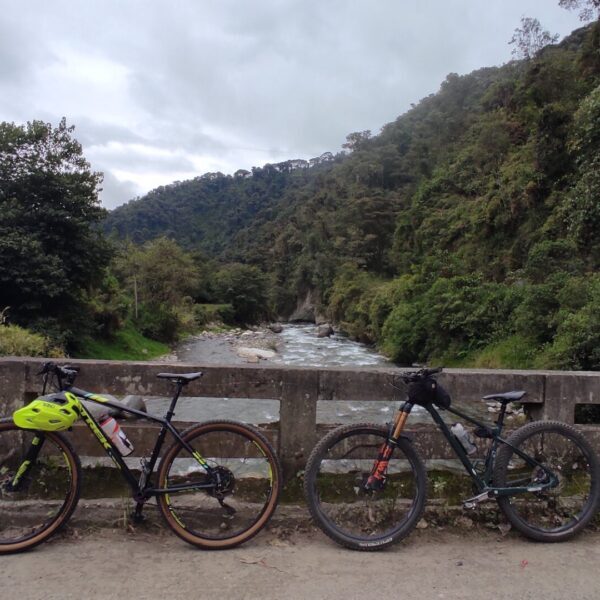
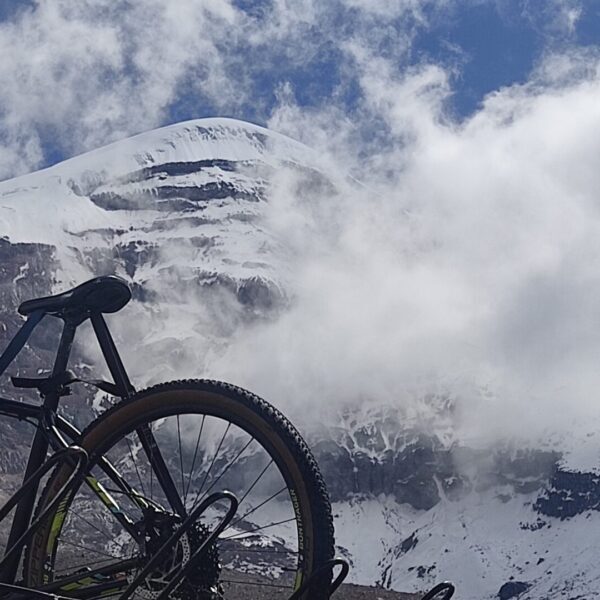
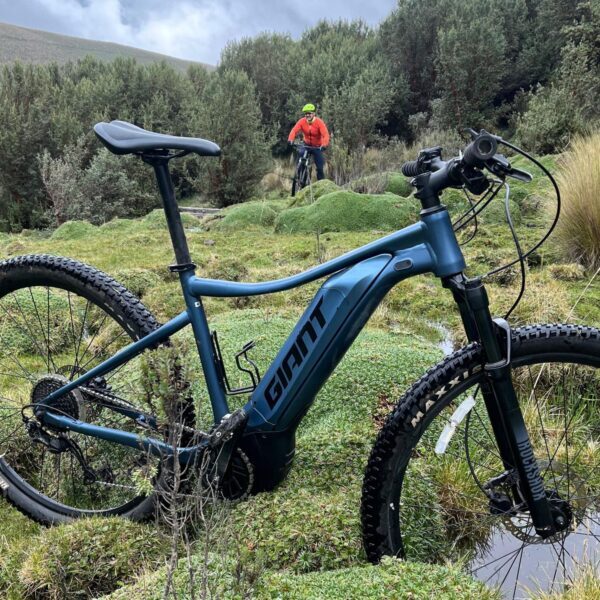
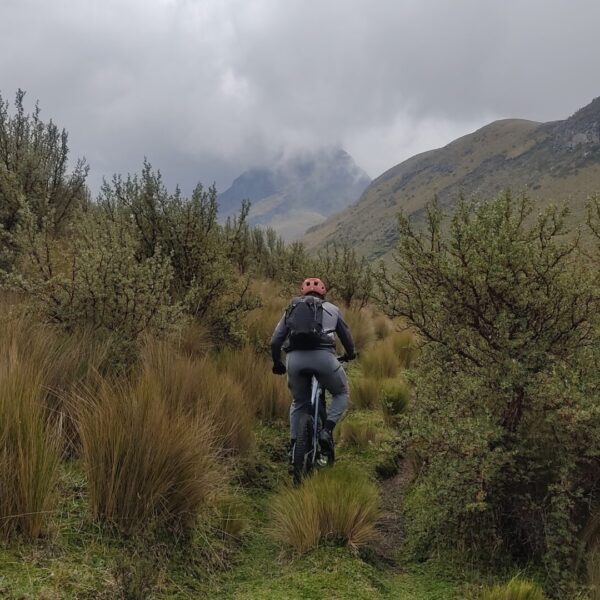
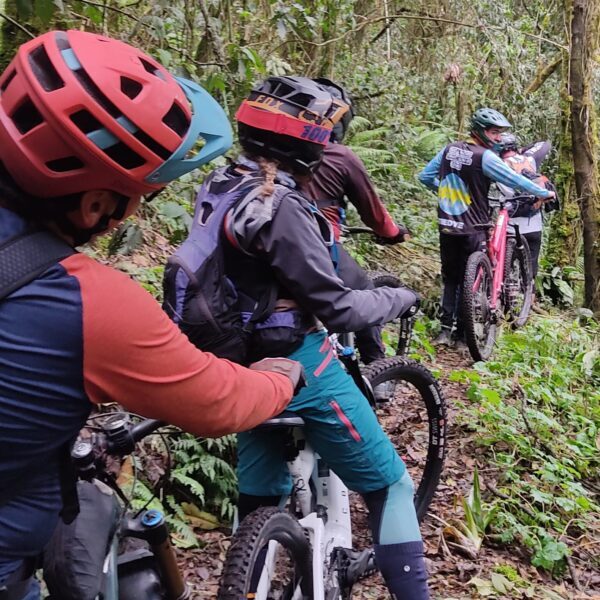
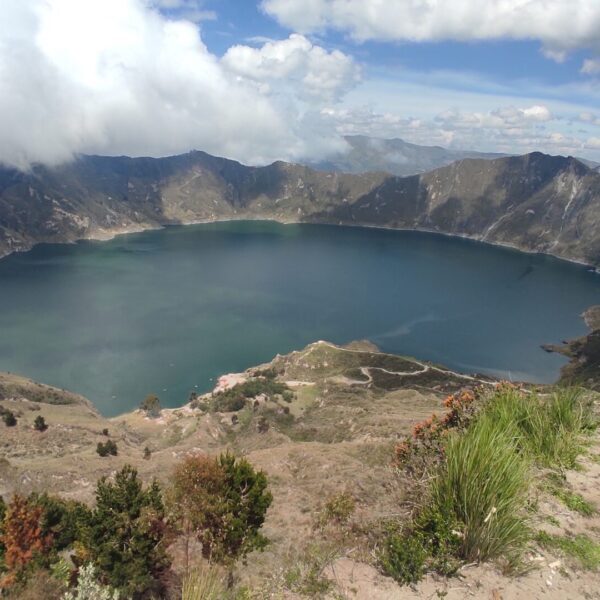
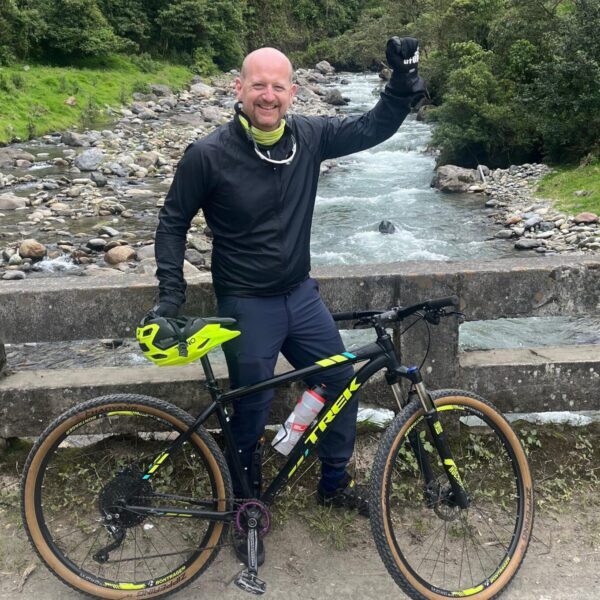
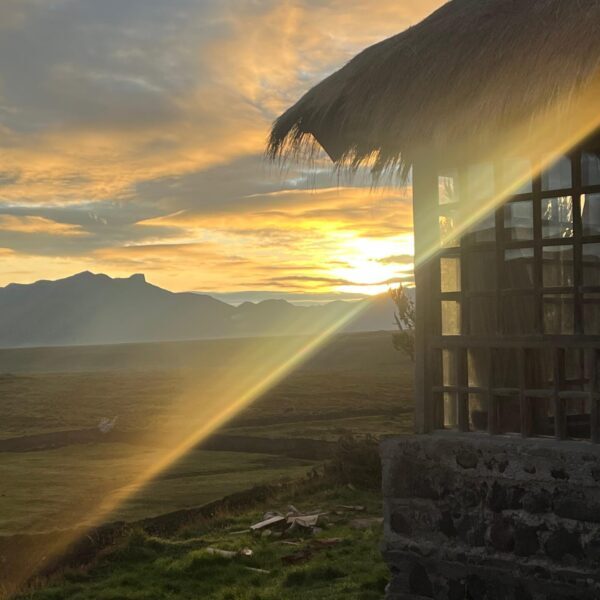
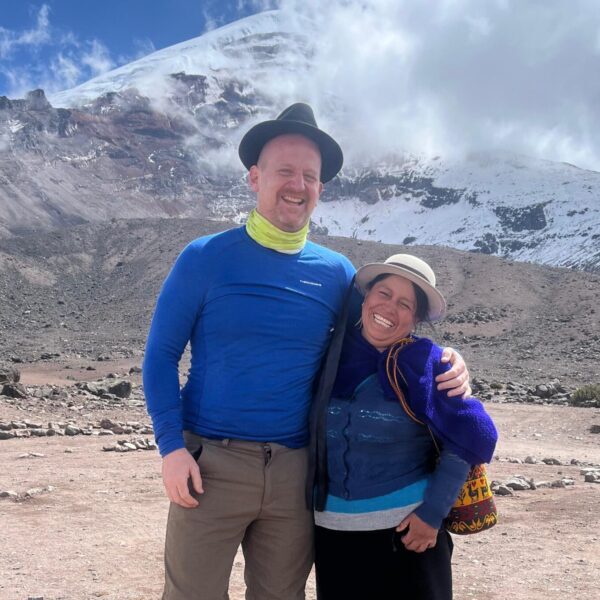
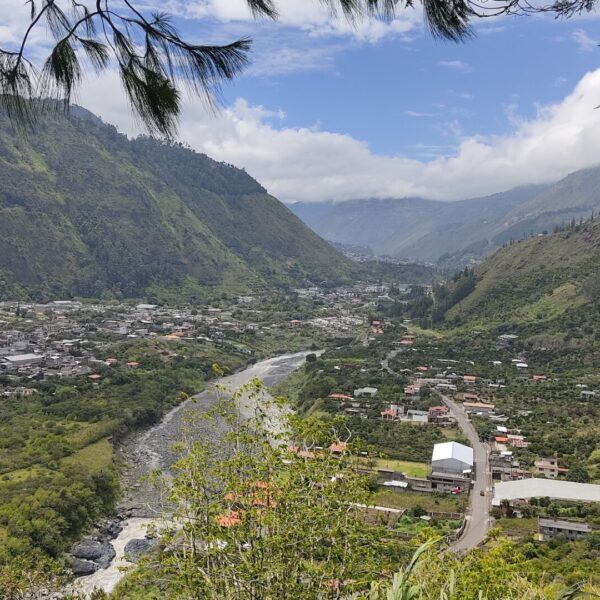
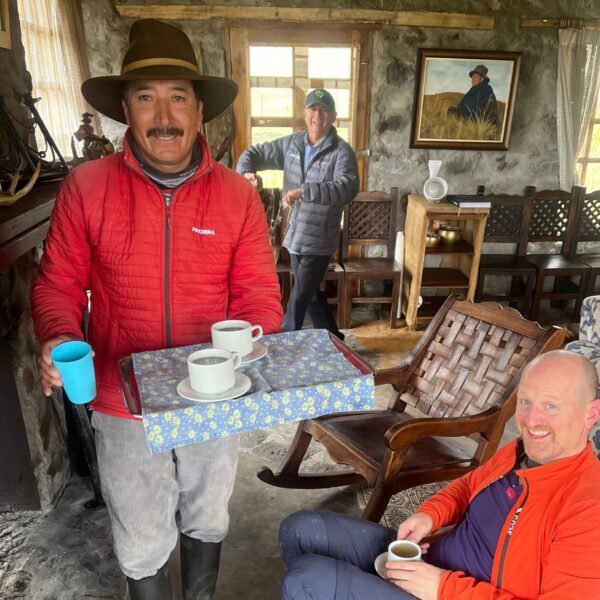
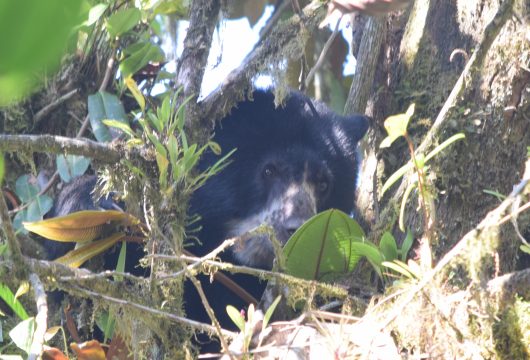
 a Tailor Made Tour
a Tailor Made Tour 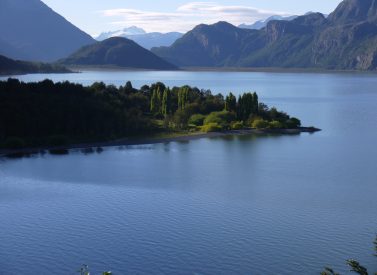

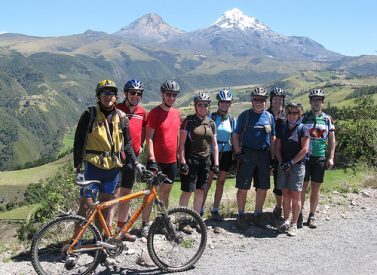
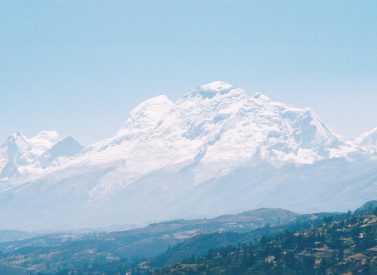
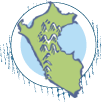
 a Group Tour
a Group Tour 